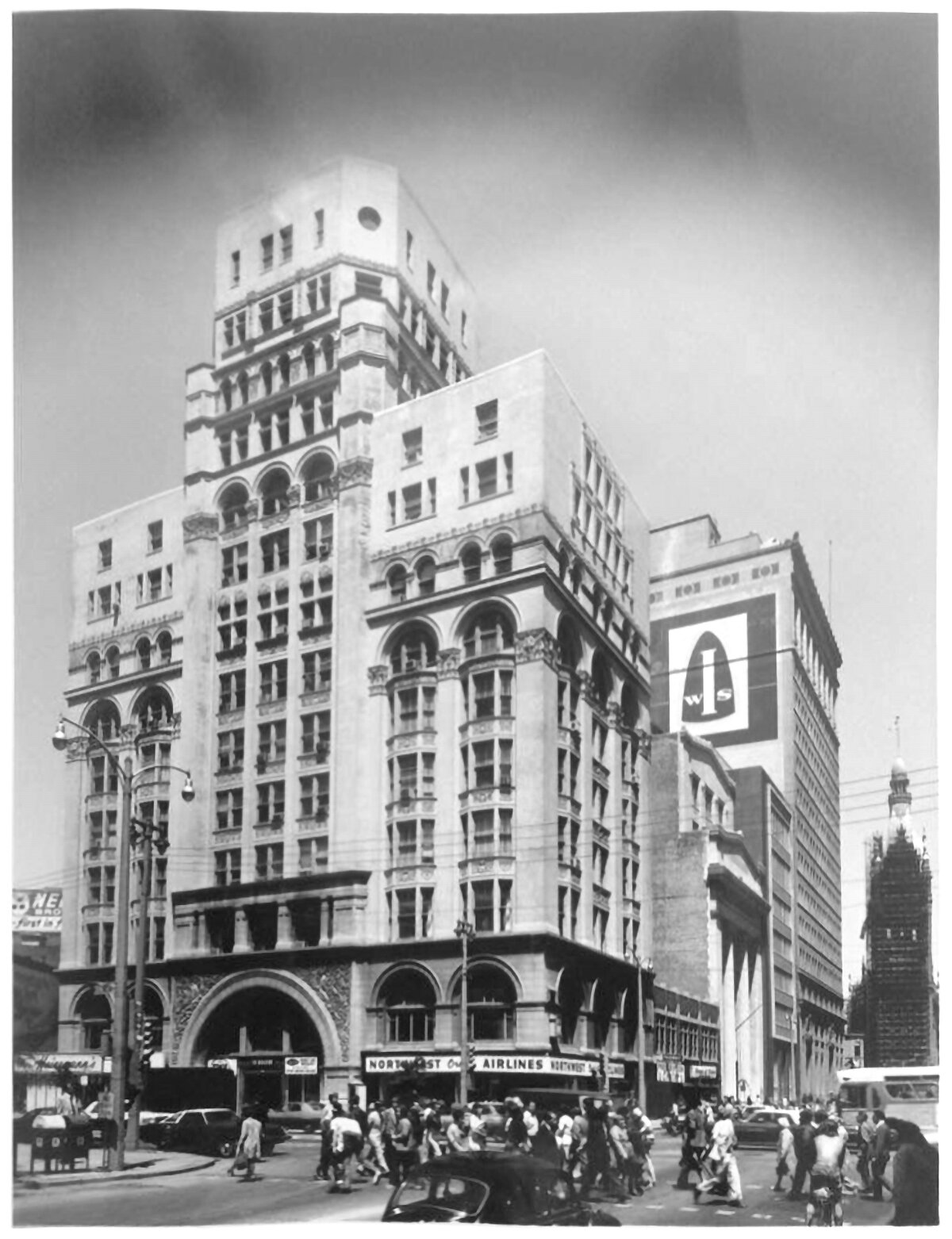The Pabst Building and the Symbolism of Verticality
Postcard from the early 1900’s showing the Pabst Building in downtown Milwaukee. Frederick Pabst built the building to house the headquarters of his brewing empire, and it subsequently became a symbol for early skyscrapers in the city.
In 1890, Frederick Pabst purchased a plot of land at the center of downtown Milwaukee, on which he planned to build a headquarters for his brewing empire. The chosen site was located at the starting point of the city, where Solomon Juneau’s cabin and trading post had originally stood. This was a fitting place for Pabst’s vision, since he was planning to build the city’s first skyscraper, which he hoped would become the centerpiece of the city. A year later, the Pabst Building was complete. Standing fourteen stories and 235 feet (71 meters) tall, it was the tallest building in the city at the time, and it was a wonderfully detailed example of the Renaissance Revival style.
Being Milwaukee’s tallest building was symbolic for Pabst and for the city. The building established the Pabst name on the city skyline, as well as the success of the city as a whole. It was Milwaukee’s first skyscraper, and it was built by a local company. Pabst’s dominance through verticality wouldn’t last as long as he’d hoped, however.
Postcard showing Milwaukee City Hall, completed in 1895 as the tallest building in the city. It beat out the Pabst Building to claim the title, and would hold it until the 1970’s.
Four years later, in 1895, the Pabst Building was surpassed in height by Milwaukee City Hall. Standing 353 feet (108 meters) tall, it beat out Pabst by a long shot. The city had reclaimed it’s verticality from the individual, and it did it through it’s own headquarters building.
Throughout the years, the Pabst Building slowly deteriorated, and a lack of upkeep resulted in roofline alterations due to structural deficiencies. Pictured below without it’s roof, it resembles an unfinished structure, or one with it’s head chopped off. As if to put it out of it’s misery, the Pabst Building was finally demolished in 1981 to make way for a much taller replacement: the bland, Post-modern, run-of-the-mill 100 East Wisconsin Building. It’s a sad ending for Pabst, made worse by what replaced it.
Photo of the Pabst Building after it’s roofline was flattened in the late 1940’s, due to structural deficiencies. In the background on the right is Milwaukee City Hall, which surpassed the Pabst to become the tallest building in Milwaukee. The date of this photo is unknown.
The story of the Pabst building has played out myriad times in cities all over the world. Skyscrapers compete for the label of tallest, and those that achieve it will no doubt be surpassed by taller structures down the line. This surpassing of height over time is inevitable, but the lack of upkeep and eventual demise of Pabst is an unfortunate ending that could’ve been avoided. One would think the building could’ve been restored if the right owner had taken over, and the city would still be enjoying Frederick Pabst’s vision today.
I previously wrote about another prominent example of this: Trinity Church in New York. It’s a similar tale at a larger scale, without the demolition angle.



